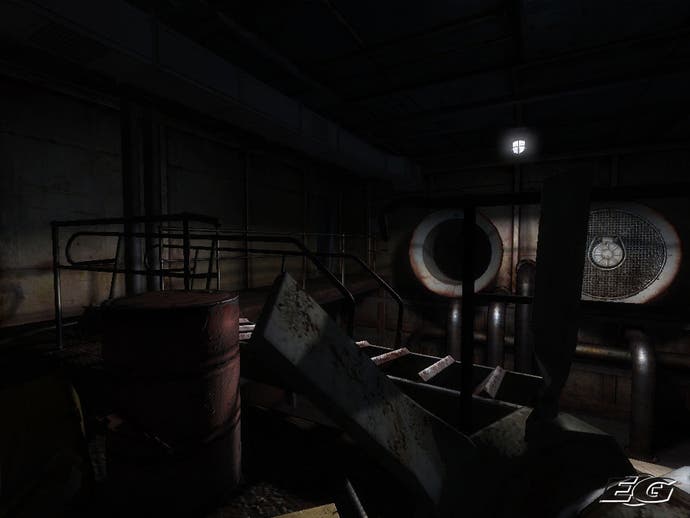Cryostasis
The very, very cold war.
"The Russian BioShock." Not a bad start, Mr PR Man. Ken Levine's undersea epic may have divided opinion, but it takes a hard heart not to warm to its narrative ambition and to the fantastic vision of the city of Rapture. We don't care whether it's the Russian BioShock, the Indian BioShock, or the Kyrgystani BioShock - anything that strives to reach similar goals is automatically interesting.
Setting eyes on Cryostasis for the first time, it's apparent where the BioShock comparisons stem from. Like 2K Games' hit, Cryostasis is a first-person game where you play a lone human exploring a strange environment populated largely by hostile foes - and like BioShock, much of the game focuses on the need to piece together details of the disaster which brought about this state of affairs.
Also like BioShock, the game is set in the 1950s - but there the comparisons between the settings end. In Cryostasis, you play a Soviet meteorologist working north of the Arctic Circle. At the start of the game, you receive a distress call from a nearby ship, but upon your arrival you black out - and when you wake up, you're on board, deep in the bowels of the stricken vessel.
Two key elements define Cryostasis' environment. The first is the ship itself, a Soviet-era nuclear-powered icebreaker - and therefore an astonishingly huge beast. These ships plied the frozen waters north of Russia and Siberia during the Cold War, and the game's fictitious icebreaker, North Wind, is the height of a nine-storey building and over 200 metres long. As you'd expect, there's none of Rapture's fine art deco style here. The ship is relentlessly industrial and utilitarian, with echoes of films like Das Boot in its often brutally claustrophobic interiors.

And the second key element in Cryostasis' environment? Cold. In this game, cold isn't just a description, an excuse to draw some nice snow and ice textures. The cold in Cryostasis lies right at the heart of how the game works. It gnaws constantly at your character as you progress through the (mostly) dead, frozen interior of the vast ship, a constant and unwelcome companion throughout your adventure. Cryostasis has no health bar - instead, there are a pair of thermometers in the bottom left of your screen. One shows the temperature in the room around you - the other shows your internal body temperature. Let your body cool down sufficiently, and you freeze to death. The cold wins.
Much of the game, therefore, is spent looking for sources of heat. The ship's reactors continue to pump it through various pipes and devices, which you can use to warm yourself up before plunging through frozen environments. Some areas of the ship even have heating elements which can be turned on, warming up entire rooms to habitable levels - a process accompanied by a rather nice graphical effect where the ice covering every surface rapidly melts and runs down the walls to form puddles on the floor.
In itself, this sets up an interesting set of puzzles and progression systems. To get through the game, you have to beat the cold - staying warm as you move forward, enabling the heating systems to make progress, and occasionally running across the deck of the ship to reach new areas. The deck is one of the most inhospitable areas we saw - stranded in the middle of a snowstorm, visibility is incredibly poor, and the air is so cold that the inside of your goggles ices up after only a few seconds outside, leaving only a small area in the middle of the screen through which you can see clearly.


